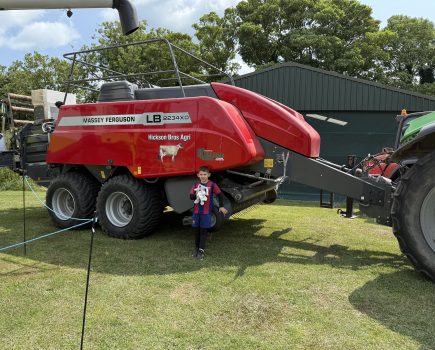As I ride the rollercoaster of late season old crop grain prices in what merchants tell me is a ‘weather market’, I’ve sold feed wheat for £162 and £181 per tonne in recent weeks. But at even the higher of those two prices, is there currently a profit to be had growing grain?
Land agents Strutt and Parker certainly don’t seem to think so as they predict a ‘net margin’ (the profit before rent and finance) for an average performing combinable crops business for harvest 2024 of £80 per hectare. I don’t know many landlords who would be content to charge £80 per hectare as rent, so the assumption has to be that the average arable farming tenant is currently losing money.
And, of course, there is that use of the word ‘average’. If the average profit before rent and finance is a paltry £80 per hectare, what on earth is the net margin figure for arable farmers who are below the average?
In their analysis, Strutt and Parker discuss the wide gap in terms of profitability between average and ‘higher-performing’ crop businesses, but prefer not to detail how badly the low performers are doing. Even the higher performers, though, are only forecast to enjoy a net margin of £271 per hectare for harvest 2024, which will barely cover the rent and/or mortgage interest charges.
Strutt and Parker point out that the high performing farm businesses achieve higher yields and have lower fixed costs than the average, but I think this is just another way of saying that the best quality land produces the best results. Certainly, if I look around my own farm at the moment, the potential yield for harvest 2024 has been entirely dictated by land quality.
My best land was free draining and had good enough soil to cope with the biblical floods last October so that there was no soil erosion and the wheat emerged satisfactorily, if a little battered. My worst land, on the other hand, disappeared under water and only emerged in the late spring just in time to direct drill a spring bean crop. Same farmer, very different outcomes. Or, as my grandfather used to say, it’s easy to be a good farmer on good land.
But perhaps that message is just a bit too simple for ‘rural analysts’ who would rather have us believe that it’s all about everything from financial management to business structures to staff management, rather than simply the quality of our land.







